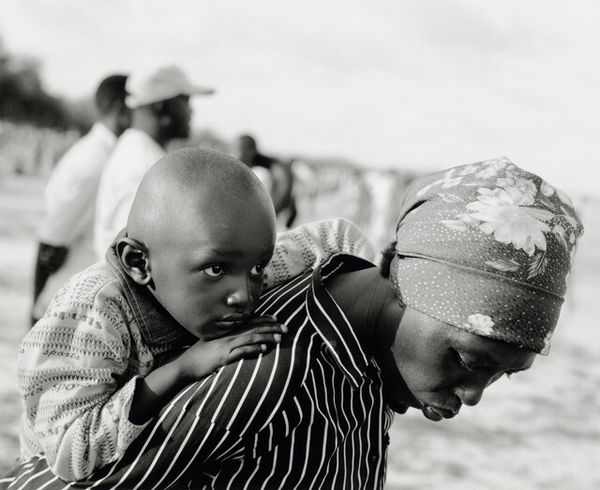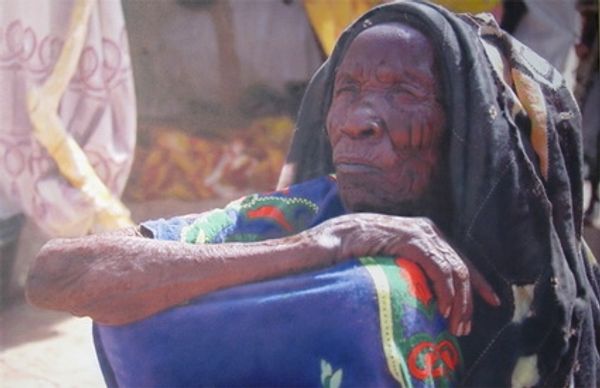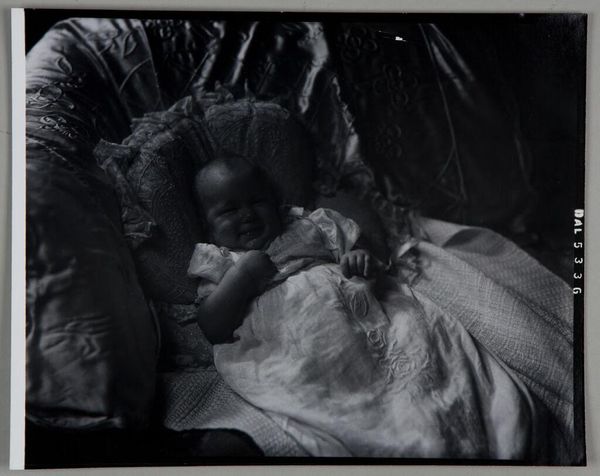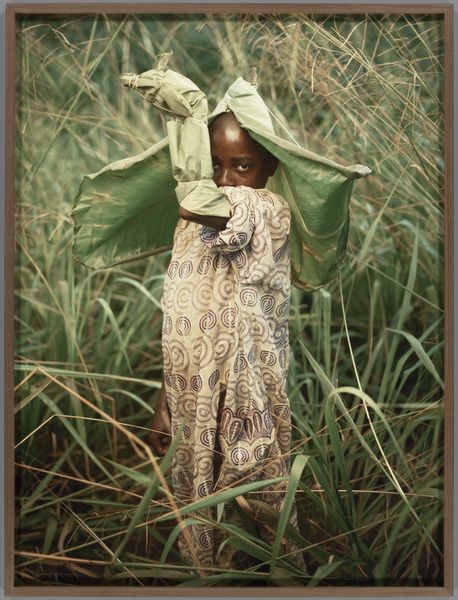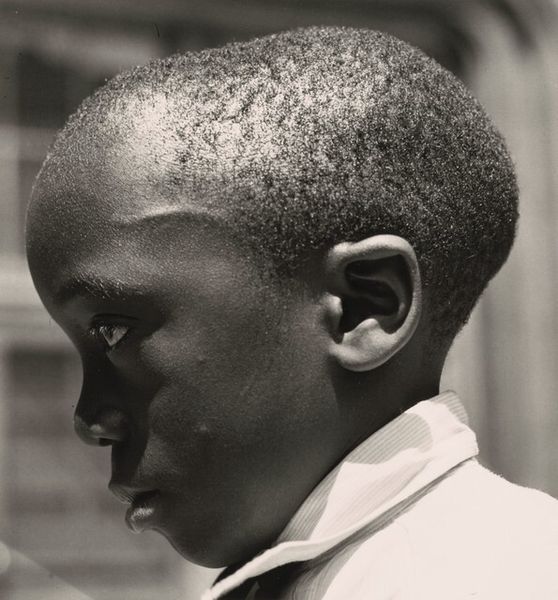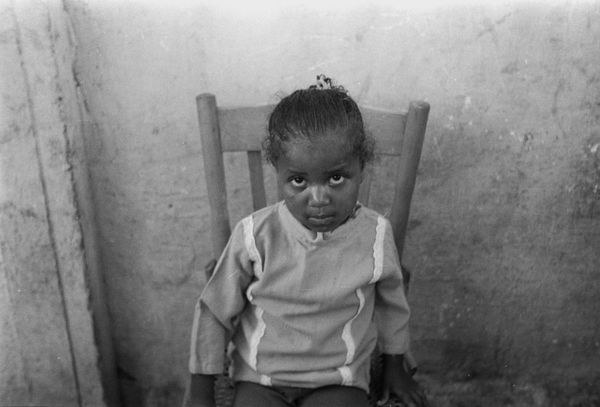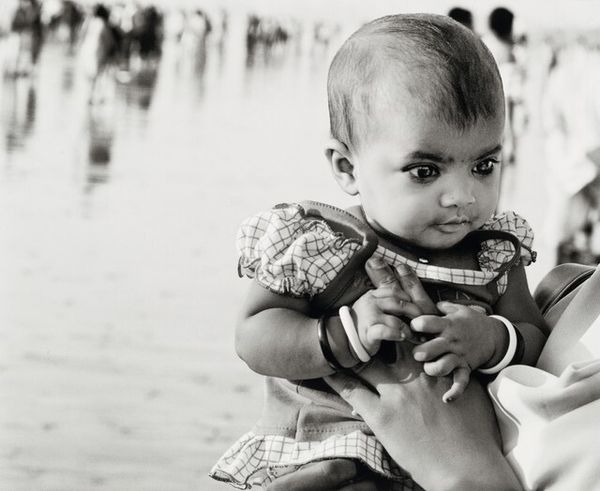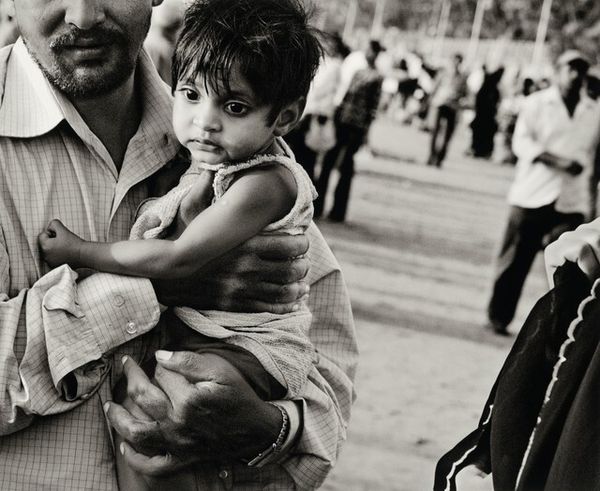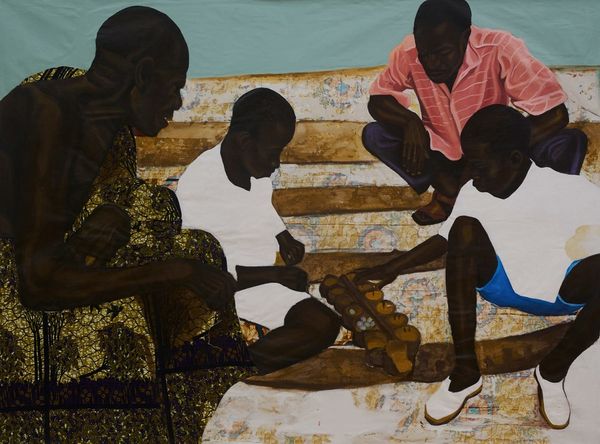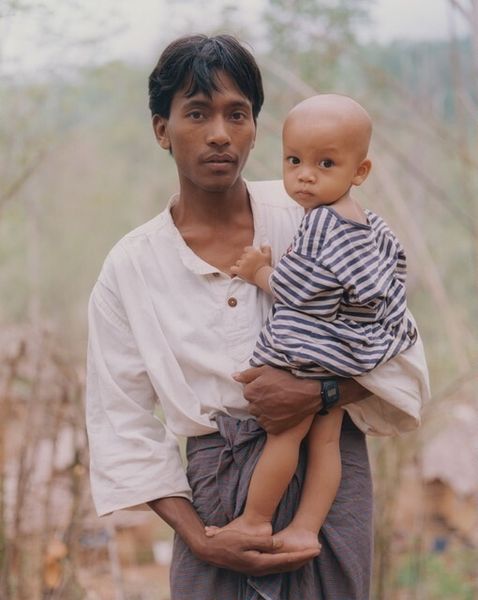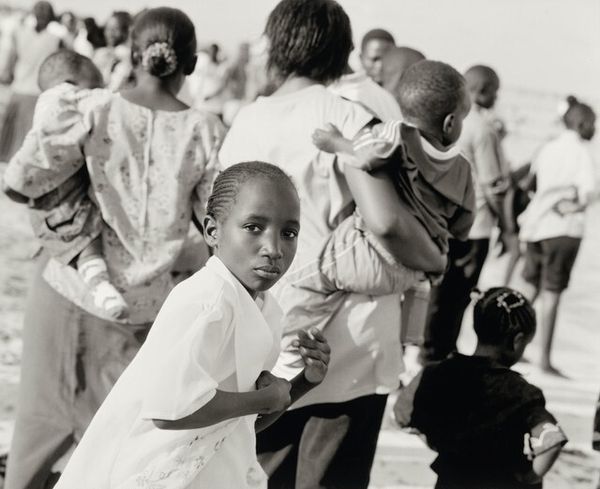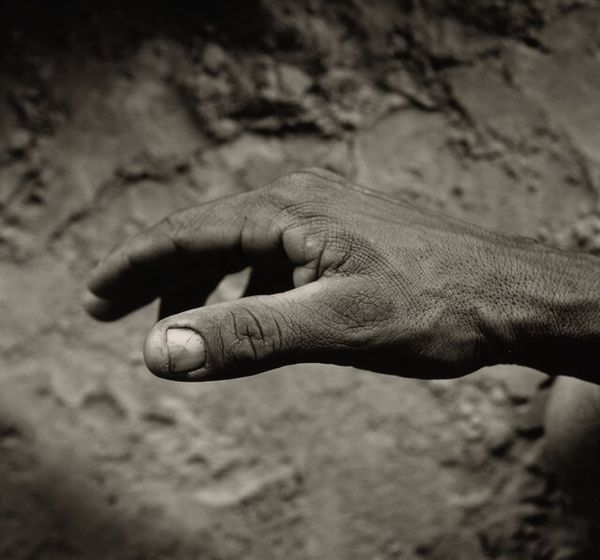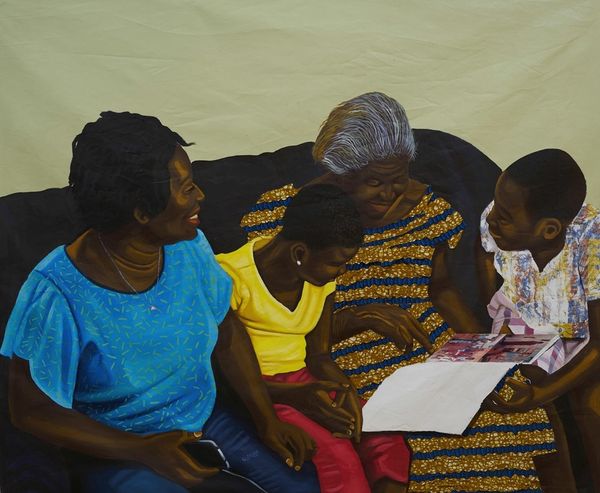
photography
#
portrait
#
african-art
#
contemporary
#
narrative-art
#
photography
#
nude
Dimensions: image: 25.4 x 38.1 cm (10 x 15 in.) sheet: 35.88 x 48.58 cm (14 1/8 x 19 1/8 in.)
Copyright: National Gallery of Art: CC0 1.0
Curator: Heather McClintock's photograph, "Alema Rose, Aler IDP Camp, Uganda," taken in 2006, captures a quiet moment of intimacy. What strikes you most about it? Editor: The immediate feeling is one of profound stillness, almost melancholic. The dark tonality and the soft focus lend a dreamlike quality to the scene, yet the textures – the fabric, the child's skin – are vividly present. Curator: Indeed, McClintock's use of light here is quite deliberate, isn't it? The interplay of light and shadow guides the viewer's eye, focusing on the tender interaction between mother and child, while also drawing our attention to the formal arrangement of shapes. The composition itself creates an enclosed space that contrasts with our likely expectations about such camps. Editor: I agree about the striking composition, but I'm more interested in the story of this image. Internally displaced persons camps are inherently about dispossession and resilience, so knowing that this image was taken in such a context gives me so much more to think about as regards its purpose. Was it intended as a humanizing document, to combat prevailing stereotypes? Or is it an accidental representation, which almost gives more value to its impact? Curator: One could read the pattern on the cloth as a form of protection or perhaps a screen. This patterning gives a kind of graphic quality that seems highly designed in relationship to the young subject's head; at the same time it is difficult to parse where that patterned cloth actually begins or ends. The question of boundaries becomes central. Editor: To further consider that, thinking of the production of the printed fabric, who produced this material? And was it produced with these associations, or as some cheap import which came to be employed in a far more charged role? Perhaps if we had details about the labor and commodity chains at play in such images we'd begin to understand not just the portrait's semiotics but its economy too. Curator: You raise important questions. Ultimately, this is an image deeply engaged in the aesthetic play of forms, textures, and patterns while also operating as a complex social artifact, even in its title drawing attention to individuals at play within institutional forces. Editor: Right. Its artistic power resides, at least partly, in its rootedness in these harsh conditions – which adds so much emotional weight. Curator: Yes. And how this is captured photographically reveals a poignant harmony between its artistic merits and humanitarian focus. Editor: Absolutely. The photograph gives pause to think about more than just visual technique, which helps ground its beauty into something more deeply humanistic.
Comments
No comments
Be the first to comment and join the conversation on the ultimate creative platform.
